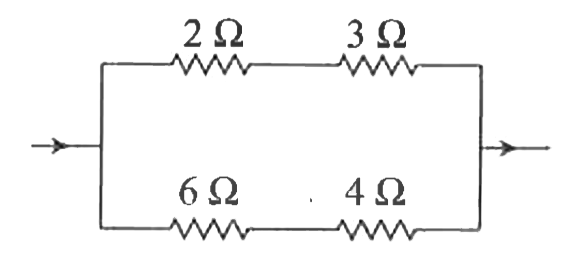Heat produced in a wire of resistance R due to current flowing at constant potential difference is proportional to
R
R2
1R
1R2
The correct Answer is:C
Step by step video, text & image solution for Heat produced in a wire of resistance R due to current flowing at constant potential difference is proportional to by Physics experts to help you in doubts & scoring excellent marks in Class 10 exams.
Updated on:21/07/2023Topper's Solved these Questions
- HEATING AND MAGNETIC EFFECTS OF CURRENT BOOK - MCGROW HILL PUBLICATIONCHAPTER - HEATING AND MAGNETIC EFFECTS OF CURRENT EXERCISE - HIGHER ORDER THINKING QUESTIONS
34 Videos
- HEATBOOK - MCGROW HILL PUBLICATIONCHAPTER - HEATEXERCISE - HIGHER ORDER THINKING QUESTIONS
15 Videos
- LAWS OF MOTION, FRICTION AND ARCHIMEDES' PRINCIPLEBOOK - MCGROW HILL PUBLICATIONCHAPTER - LAWS OF MOTION, FRICTION AND ARCHIMEDES' PRINCIPLEEXERCISE - HIGHER ORDER THINKING QUESTIONS
34 Videos
Similar Questions
When a current flows in a wire of resistance R at a constan t potential difference, then the value of heat produced by a current is inversely proportional to:
View SolutionA cell is connected to a 9 ohm resistance, because of which heat of 400 J is produced per second due to current flowing through it. Obtain the potential difference applied across the resistance.
View Solution
Knowledge Check
The heat produced in a wire of resistance 'x' when a current 'y' flows through it in time 'z' is given by:
Ax2×y×zBx×z×y2Cy×z2×xDy×z×xThe heat developed in an electric wire of resistance R by a current I for a time t is
AI2Rt4.2calBI2RCI2R4.2tcalDRt4.2I2calStatement I: A wire of uniform cross-section and uniform resistivity is connected across an ideal cell. Now the length of the wire is doubled keeping volume of the wire constant. The drift velocity of electrons after stretching the wire becomes one-fouth of what it was before stretching the wire.
Statement II: If a wire (of uniform resistivity and uniform cross section) of length l0 is stretched to length nl0, then its resistance becomes n2 times of what it was before stretching the wire (the volume of wire is kept constant in stretching process). Further at constant potential difference, current is inversely proportional to resistance. Finally, drift velocity of free electron is directly proportional to current and inversely proportional to cross-sectional area of current carrying wire.AStatement I is true, Statement II is True, Statement II is a correct explanation for Statement I.BStatement I is True, Statement II is True, Statement II is not a correct explanation for Statement I.CStatement I is True, Statement II is False.DStatement I is False, Statement II is True.
A cell is connected to a 9 ohm resistance, because of which heat of 400 J is produced per second due to current flowing through it. Obtain the potential difference applied across the resistance.
View SolutionAssertion : A wire of uniform cross-section and uniform resistivity is connected across an ideal cell. Now the length or wire is doubled keeping volume of wire constant. The drift velocity of electrons after stretching the wire becomes one fourth of what it was before streching the wire.
Reason: If a wire (or uniform resistivity and uniform cross-section) of length l0 is stretched by a factor n, then its resistance becomes n2 times the one before stretching the wire (the volume of wire is kept constant in stretching process.) Fruther at constant potential difference, current is inversely proportional to resistance. Drift velocity of free electron is directly proportional to current and inversely proportional to cross-sectional area of current carrying wire.
View SolutionThe field due to a long straight wire carrying a current I is proportional to
View SolutionIn the circuit as shown in the figure, the heat produced by 6 ohm resistance due to current flowing in it is 60 calorie per second. The heat generated across 3 ohm resistance per second will be

View SolutionThe field due to a long straight wire carrying a current I is proportional to
View Solution
